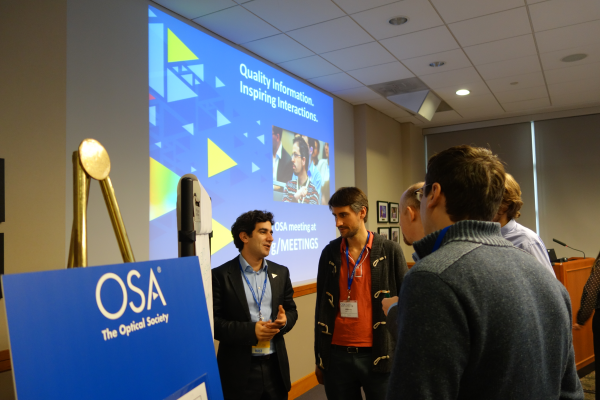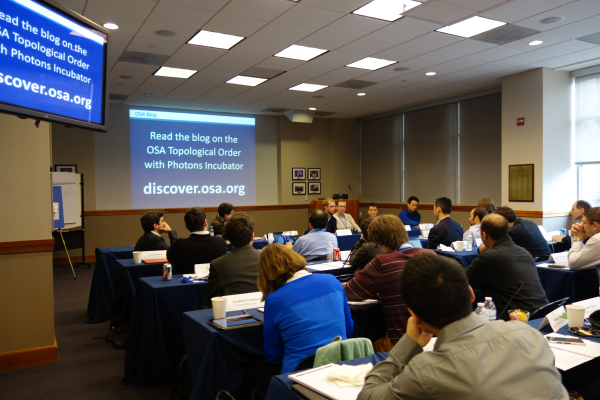What lies ahead for topological photonic systems?
Sean Kelley
A tantalizing problem for the field is demonstrating condensed-matter phenomena with interacting photons - studying many body interactions using topological properties. One solution is in using nonlinearities to emulate many body effects. Another proposal, from Andrew Houck, involves examining phase transitions in a cavity qed circuit. One problem in making many-body states is photon loss, addressed by Eliot Kapit. He offered a way to obtain strongly interacting bosons by using a primary lattice coupled to an auxiliary lattice of intentionally "bad" quits.
There was also a panel discussion aimed at determining the future of topological photonic systems.
Panel members Eugene Demler, Shanhui Fan, Andrew Houck, and Gennady Shvets, addressed two main questions: (1) Where is this field going in the next few years? (2) What will we have learned in 10-15 years?
In the next few years, the panel agreed that field will focus on:
- Interactions at the single photon level.
- Examining effects relevant for condensed matter.
- Continuing to scale designs down to chip size.
- Emulating many-body interactions using nonlinear effects, and to this end developing nonlinear tools.
- Determining fundamental limits in the field.
In fifteen years, the hope is for:
- A much richer toolbox for analyzing open systems, complementary to the tools available in condensed matter.
- New, very interesting tools for manipulating light.
- An understanding of basic theoretical limits.
The meeting concluded with concluding remarks from host Jake Taylor. Was it a success? As Hakan Tureci put it, this was "one of the rare conferences where I learned a lot."


